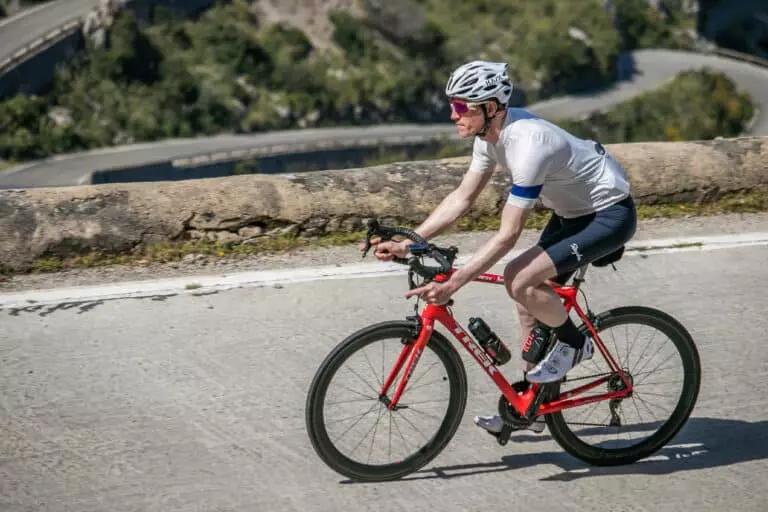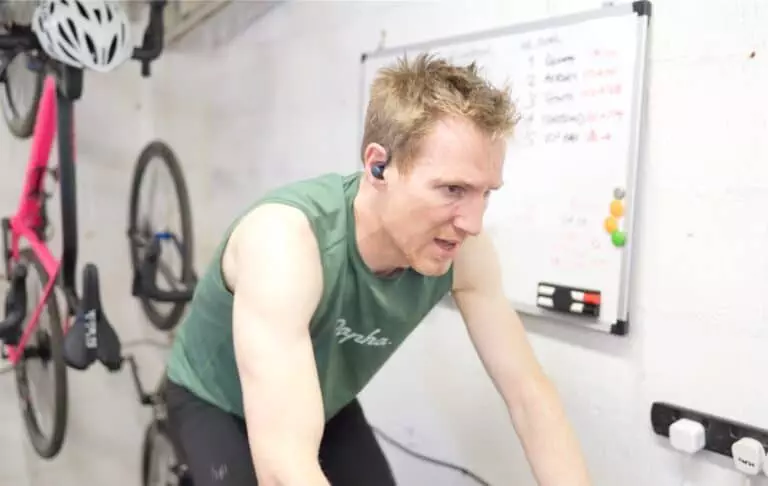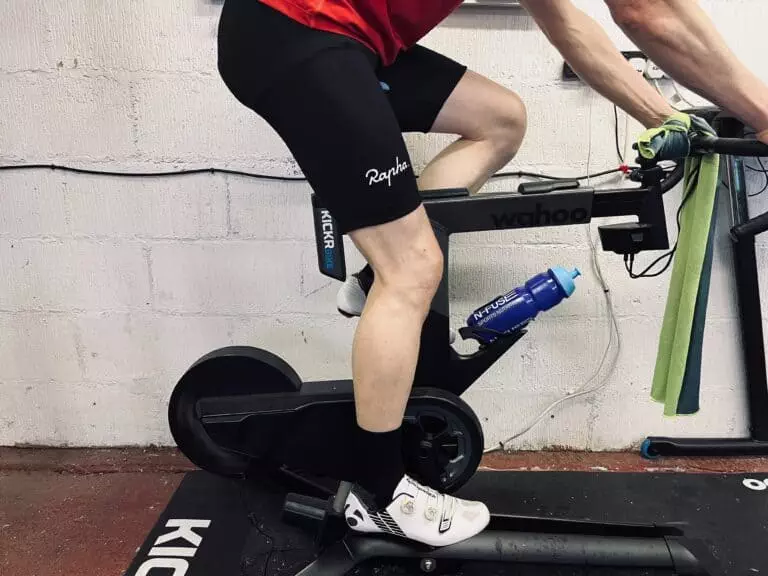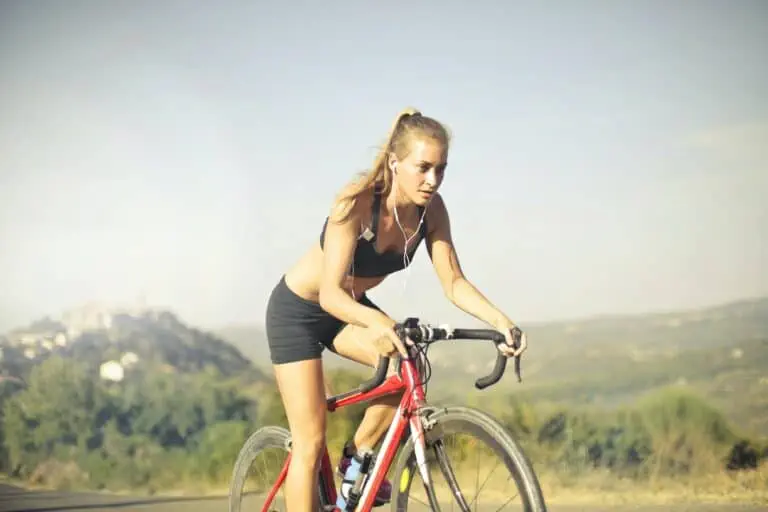If you’ve ever seen those pictures of the Tour de France cyclists, you might be taken aback by their appearance, just like I was. You’ll see extremely low body fat and large thighs with muscular, vascular legs. Is that what cycling actually does to the body? What is the effect of cycling on body shape?
There is a big difference between pro-cyclists and everyday cyclists. If you aren’t a pro-cyclist, you probably don’t have to worry about looking like one, even though cycling will have an effect on your body shape. Sprinters tend to have bigger, more muscular thighs, while endurance riders are leaner.
Cycling changes your body shape by helping you to lose weight and gain muscle. And while there are some risks to cycling, the invisible and visible benefits of cycling are well worth the effort.
In this article, we’re going to take a look at the many ways cycling can change your body and your body shape. We’ll look at some of the positive changes your body goes through as well as some of the injuries that can happen. We’ll talk about the differences for men and women, as well. But first, let’s look at some of the visible and invisible ways that cycling changes your body.

How Cycling Changes Your Body (The Facts)
Cycling Can Lead to Weight Loss
One way that cycling can change your body is by helping you to lose weight. Cycling can burn over 500 calories in an hour, depending on your size and the intensity of your workout. And while you can’t out-pedal a bad diet, you can lose weight when you pair cycling workouts with a healthier diet and calorie deficit.
Want to know how many calories you burn when cycling? Check out this calculator for help.
A friend of mine says cycling at least 100 miles a week is the key to burning enough calories to help you lose weight. Not only does the cardio aspect of cycling burn calories, but the increase in muscle mass will also help you burn calories, too.
Muscle Growth
Cycling also increases muscle growth, especially in your lower body. This is because the muscles in your lower body, such as your glutes, quads, hamstrings, and calves, get quite a workout from cycling. As a result, you may find more muscle definition and even larger muscles, although if you want to really improve your muscle size, you’ll want to add in some strength training to your routine.
But don’t forget the other parts of your body, too. Cycling can help you strengthen your core muscles as well as your upper body muscles, especially if you focus on cycling disciplines such as mountain biking and cyclocross.
Hidden Changes In Your Body
There are also some invisible changes that happen when you start cycling. First, of course, you’ll get an improvement in your cardiovascular health if you cycle regularly. Your heart becomes stronger and more efficient, which gives you lower blood pressure and a lower resting heart rate. You’ll have better energy, and your lungs will move more oxygen.
You’ll get more mitochondria, too. These are the cells responsible for making energy from the food you eat. So as you ride, your body will produce more, giving you more energy. Your muscles will become more efficient, too.
You’ll sleep better. As you work out more, your sleep quality will improve. Your stress hormone will decrease.
You’ll feel better. Your mood gets a great boost from cycling, and so does your immune system. So you’ll feel better both mentally and physically if you ride hard regularly.
You may not be able to see all of these changes, but they are important aspects of how cycling changes your body from the inside.
Most Common Injuries In Cycling (Why Do These Happen?)
Unfortunately, cycling can have some drawbacks for your body. Injuries can happen, especially if you ride hard and often or your bike doesn’t fit well. However, with a little prevention and a good bike fit, you can prevent some of these common cycling injuries.

Neck
Holding a static position on the bike for too long, wearing a helmet that is too heavy, or being in the wrong position on the bike can all lead to neck pain and soreness. Gentle neck stretches and a good bike fit can go a long way toward preventing neck pain.
Hand
Hand numbness is a very common complaint among cyclists. It can be caused by a number of factors. For example, a tense upper body can put pressure on the nerves in your hands, causing numbness. Also, gripping the hoods or the bars of your bike too tightly can make your hands go numb.
Hand pain and numbness can also be caused by poor positioning on the bike. For example, if you have too much of your weight on your hands and handlebars, you could be causing hand numbness. On the other hand, if your core muscles aren’t strong enough to hold you in the bike position, you could be leaning too hard on your hands.
Back
Back pain on the back can actually be caused by too much sitting when you’re off the bike! But it can be caused by other factors, as well. Pushing too hard of a gear or riding a bike that is too big for you can make you feel stretched out and cause pain.
If you have back problems already, you made need a bike with a more upright and less aggressive position.
Knee
Knee pain can be caused by overuse. For example, you may experience knee pain if you are using too hard of a gear – ease up and spin a little bit to see if it helps. On the other hand, if your saddle is too high, it could cause knee pain, and if your saddle is too low – it could also cause knee pain.
Saddle Sores
Saddles are surprisingly painful. Usually, they occur from rubbing or chafing between your skin and the saddle. They can also happen from uneven pressure if you sit on the saddle in a way that is crooked or off-center.
To prevent saddle sores, make sure you are sitting square on the saddle. You’ll also want to wear a high-quality chamois and use chamois cream to prevent friction.
Common Injuries from Bicycle Accidents
Any number of bumps, bruises, and breaks can happen if you have an accident while riding. You should always wear a helmet when on the bike to prevent a concussion. Broken collar bones are pretty common in serious cycling falls.
Avoid accidents as much as possible. Always be aware of your surroundings, especially in traffic. Wear bright-colored clothing and use a flashing taillight on your bike so you can be seen easily. Practice your bike handling skills, too, so you can handle whatever the road throws your way.
Side Effects Of Cycling on the Male Body
As we mentioned before, cycling increases muscles mass and helps decrease body fat, especially in men who tend to gain muscle easily. There are a few drawbacks to cycling that you may want to consider, if you identify as male.
Sexual Dysfunction
Does cycling cause sexual problems for men? This topic is hotly debated, but some people believe that it does. According to Harvard Health, pressure from the saddle on the perineum can cause issues, although the risk is low. Using a saddle that fits you well and keeping your handlebars lower than the seat will decrease your risk of erectile issues.
Of course, if you have numbness or pain, see your doctor.
Noodle Arms
OK, cycling doesn’t exactly cause you to have skinny, noodle arms. But if all you do is cycle, your lower body will be proportionally larger than your upper body. So you might end up with larger thighs (especially if you’re a sprinter) and skinny arms since cycling doesn’t work your biceps (much).
Not to worry – you can combat noodle arms by doing some upper body work at the gym. Or just embrace it!
Shaved Legs
You become a cyclist and suddenly have the urge to shave your legs – but why? There are many reasons male cyclists shave their legs. For some, it’s for massages. For others, it’s to facilitate healing from road rash. And for others, it’s about being as aerodynamic as possible.
But for most men, shaving their legs is about tradition. Pro cyclists have shaved their legs for years, and by shaving yours, you are showing that you belong.

Cycling Side Effects on the Female Body
As a female cyclist, you don’t have to worry too much about having thunder thighs or a giant rear end. Women rarely become bulky or weighted down extra muscle without working very hard to gain specific muscle groups, and cycling is no different. And while you will build and strengthen muscles as a woman, you don’t have to worry too much about getting too bulky. However, there are a few side effects you might want to consider.

Gynecological Issues
Some women can have gynecological issues related to cycling. For example, using the wrong saddle or using a saddle that is set at the wrong angle can cause pressure and even damage to sensitive tissues. In extreme cases, surgery may be required to repair the tissue.
You may need to see a professional bike fitter if you find that you are having pain while riding so you can fix the problem before it becomes severe.
On the other hand, female cyclists tend to have better overall sexual function.
UTIs
According to totalwomenscycling.com, female cyclists are more prone to urinary tract infections than male cyclists. A number of factors could be at play here. Heat and friction from the saddle, using too much chamois cream, and body chemistry can all make you more prone to a dreaded UTI. However, making sure to be properly hydrated, changing out of your chamois as soon as your ride is finished, and taking a shower after riding can all drastically reduce your chances of catching one.
More Toned Tush and Less Lumpy Cellulite
Women are more prone to having cellulite than men. However, cycling can help! First of all, cycling increases metabolism and helps you to shed body fat. Lower body fat usually means less cellulite. In addition, increased muscle mass that is caused by cycling may also contribute to lessening the appearance of cellulite and giving you a more toned tush.
How Cycling Changes The Body (Closing Thoughts)
If you’ve been wondering how cycling changes your body, we’ve given you a number of different ideas. But there’s one more. Cycling gives you body confidence. It isn’t about changing your shape as much as it is about loving your body shape as it is.
You’ll find the confidence to don Lycra when you never thought it would be possible. To show up in public in outfits fit for rockstars and professionals. You’ll love your body for its ability to risk injury, grow stronger muscles, and to become more fit. Cycling doesn’t just change your body; cycling changes you.
FAQ
What part of the body gets toned with cycling?
Cycling really works on your lower body muscles, such as your glutes, quads, and hamstrings. You can also work on your core muscles and your calves!
What cycling does do to a woman’s body?
Over time, cycling helps women become stronger and leaner and have better cardiovascular health. It can also help reduce cellulite and inspire body confidence. Of course, there are some risks of UTIs, but overall, the benefits of cycling far outweigh the risks.
How will my body change after cycling?
Your body will become stronger and leaner from cycling (when paired with a healthy diet, of course). You’ll get more toned muscles, better heart health, and more energy. You’ll feel better inside and out.
Does cycling tone your stomach?
Cycling does use your core muscles. Your stomach and your core help to stabilize your position on the bike. However, cycling won’t really get you six-pack abs- you’ll have to do some more abdominal work for that.
